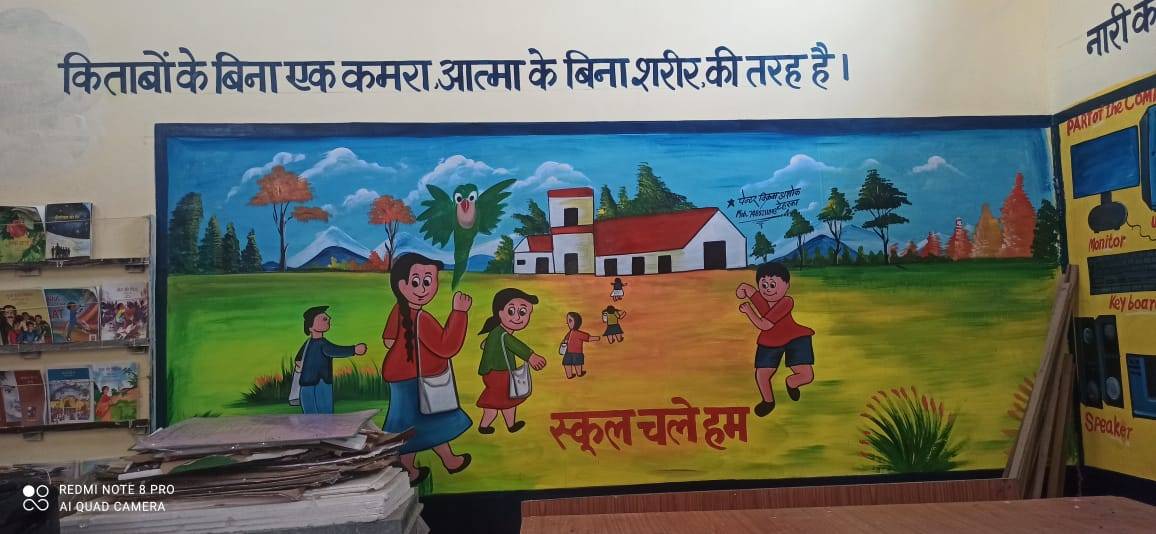National level information has frequently highlighted many unmet needs of schools and anganwadis in remote rural areas. While the government has several ambitious plans of improvements, the harsh reality is that budgetary allocations have been falling short of meeting even essential requirements, let alone make ambitious improvements. In such a situation, voluntary organizations can make an important contribution to some urgent needs of schools and anganwadis in remote rural areas. An ongoing effort in this direction has been initiated by SRIJAN voluntary organization in some schools and anganwadis of Jhansi district, utilizing financial resources provided by the HDFC Bank. In Haati village ( Bangra Block), an anganwadi with a leaking roof , uneven roof and dull surroundings obviously could not attract many pre-school children. On the basis of consultations with local community and staff members, prioritized tasks were taken up to repair the roof, provide tiled floor and paint the interior and exterior walls of anganwadi with a mix of cheerful and educational messages. As the anganwadi worker and her helper said happily, now many children feel attracted to come here regularly.

Similarly in a school in Bansar village, Bala Paintings in various classrooms as well as outer walls have contributed much to giving the school a more cheerful and child-friendly appearance.In Bisna village the school had a more urgent need. Here the water was too salty and students were very uncomfortable with consuming this. It was a health risk to daily
prepare the mid-day meals using this water. Now an R.O. has been installed here with
the help of Srijan bringing much relief to students and teachers. While these are some of the earlier interventions, in the near future several other interventions are being planned on
the basis of consultations already held with teachers, students and communities. Some
help for digital education and to facilitate use of videos in classrooms is planned, as also the setting up of school libraries and science labs in middle-level schools. Improvement of sanitation facilities is likely to be another priority. Improving sports facilities and playgrounds will also get some attention. New priorities may also emerge as the work progresses. These may appear to be fairly basic facilities to several people, but the very fact that these are still not available in so many rural schools is indication that such additional support, in addition to improved government budgets, is needed. Educational budgeting in India has remained far short of the minimal norm of about 6% of GDP, despite the fact that the need for this has been frequently emphasized. While the urgency of raising government budget for education remains the core issue, in the interim efforts such as these being made in some villages of Jhansi district, are also welcome to fulfil some urgent needs of schools and anganwadis more quickly.
Bharat Dogra is Honorary Convener, Campaign to Save Earth Now. His recent books include Man over Machine and A Day in 2071.














